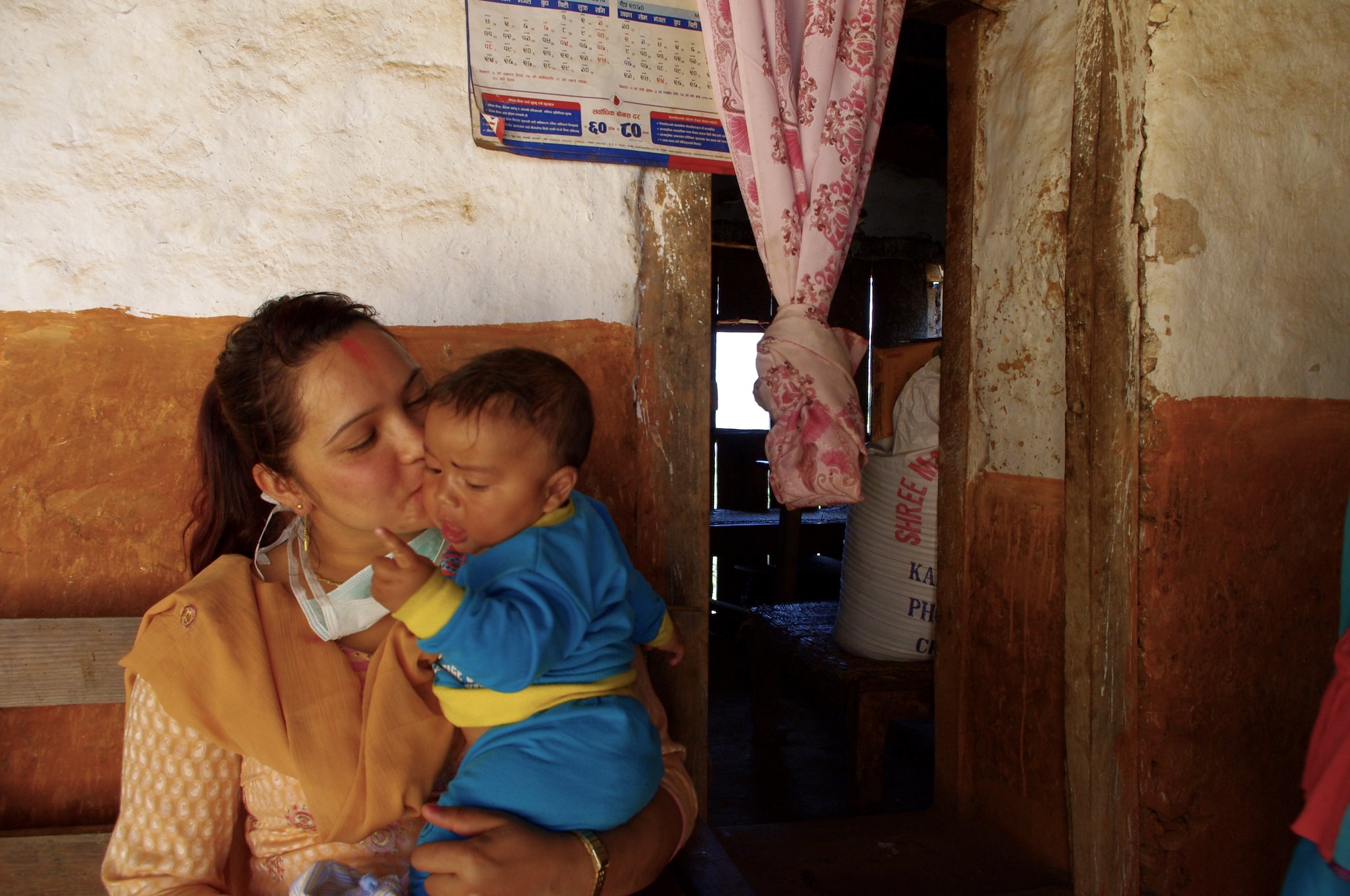May 20, 2015
Meet Ganga; the strongest woman I know
Author: AJ Warco
My colleague, dear friend, survivor of life's cruelest misfortunes - and mostly importantly, the strongest woman I know.
IN HINDUISM, HER NAME TRANSLATES INTO “RIVER” OR GODDESS THAT PERSONIFIES THE GANGES RIVER. HOWEVER, GANGA’S LIFE WAS SO FAR FROM THAT OF AN ANCIENT GODDESS’ BIRTHRIGHT, PRIVILEGE OR LUXURY.
On August 18, 1983, while working the rice harvest well into her third trimester, Ganga’s mother, Hira went into sudden labor. Too far from her village, Hira delivered Ganga while standing, clenched tightly to a rope that was hanging from a buffalo’s barn rafters. Without a midwife or clinic for miles, Ganga was wrapped in Hira’s traditional sarong and carried to the nearest village to have her umbilical cord cut, all before finally arriving home.
You see, Ganga was brought into this world by two hardworking parents but like most people from rural Nepal, they are extremely poor. Located on a hillside in Wamitaksar, Nepal her parent’s home consisted of a one-room hut made of dried mud and a hay thatched roof. Characteristic among the poor, it is very common for families to heat their homes, cook their meals, and make their life around an open fire.
.jpg?auto=webp)
“Ironically even in the 21st century, the fire that gives life to so many children in Nepal, equally takes the life of so many children.”
On a cold night in November 1983, three-month-old Ganga was sleeping between her mother and aunt who was positioned closest to the fire. During the night, Ganga’s aunt got up to relieve herself in the nearest field. Due to the incline that her family’s home was built on, Ganga had rolled into the open fire. Minutes later, Hira woke in a nightmarish sweat from a dream that her entire village was in flames.
To her mother’s worst fears, it was not her village that was burning but her baby girl. Before it was all said and done, Ganga had endured life-threatening burns, which resulted in bilateral amputations of her legs.
Her life from this point on was changed forever. Without choice, Ganga never had the chance to walk, crawl or play with her own two feet. Growing up in a country with a strong social stigma towards persons with disabilities, Ganga never had an equal chance to succeed.
She remembers her grandfather, who never agreed with Hira’s decision of sending Ganga to school, saying…“She’s as useful as a dog — why would you waste money on her education, she doesn’t have legs?”
For years, she begged her mother to send her to school. Hira’s fear and protective nature prolonged Ganga from enrolling in formal education until the age of eight. Even after she started school, she remembers her grandfather, who never agreed with Hira’s decision to send Ganga to school, saying…“She’s as useful as a dog — why would you waste money on her education, she doesn’t have legs?” The discrimination and mindset of people towards disability in Nepal didn’t stop there. Ganga was continuously bullied at school, to the point where other kids would stare, call her names and throw stones at her. Still today, Ganga bears a scar on her forehead of when one large stone knocked her unconscious.
As the years went by Ganga’s mental and physical state strengthened. She was no longer victim of the school bully but now victim of society’s lack of opportunity for persons with disabilities. She continued to get around by dragging herself on her residual limbs, without a wheelchair or mobility aid. She sometimes relied on family or close friends to carry her on their backs. At the age of 16, she met a kind-hearted Kiwi, named Rob Buchanan who had been traveling throughout Nepal. He was so taken by Ganga’s strength and charismatic nature, he had arranged for her measurements to be taken and months later, a pair of prosthetic legs made for her. At 17, Ganga walked tall and proud for the first time in her life.
Over time, Rob became Ganga’s mentor. He even began sponsoring Ganga’s Community Health Assistant training. With this knowledge, Ganga found a new appreciation for life and a desire to give back to her community. In 2006, with the help of Rob and other individual supporters from New Zealand, Ganga established her own non-profit organization, Hope Disability Centre (“HDC”) or Asha Apanga Kendra in Nepali. HDC’s mission is to provide community based programs that improve the mobility, health, education, human rights, and employment opportunities for persons with disabilities throughout Nepal. HDC also runs a hostel for disabled teens and young adults to obtain vocational trainings while receiving rehabilitative care. here.
Since 2009, A Leg To Stand On (ALTSO) has partnered with HDC to help provide treatment and rehabilitative care to more than 300 children with limb disabilities in Gulmi, Nepal. Plans are in the works to expand HDC’s capacity and improve upon the quality of service provided over the next 24 months.
Today, Ganga is stronger than ever. At 31, the village girl who was born in a buffalo barn has received numerous awards from international universities and medical institutions. Her perseverance and hard work has afforded her the financial means to send her younger brother to private boarding school, help with Radikha’s college tuition fees, and further provide for her mother and father’s plan for retirement.

.jpg?auto=webp)
.jpg?auto=webp)
.jpg?auto=webp)
.jpg?auto=webp)
.jpg?auto=webp)
.jpg?auto=webp)
.jpg?auto=webp)
.jpg?auto=webp)
.jpg?auto=webp)
.jpg?auto=webp)
.jpg?auto=webp)
.jpg?auto=webp)
.png?auto=webp)
.png?auto=webp)
.jpg?auto=webp)

